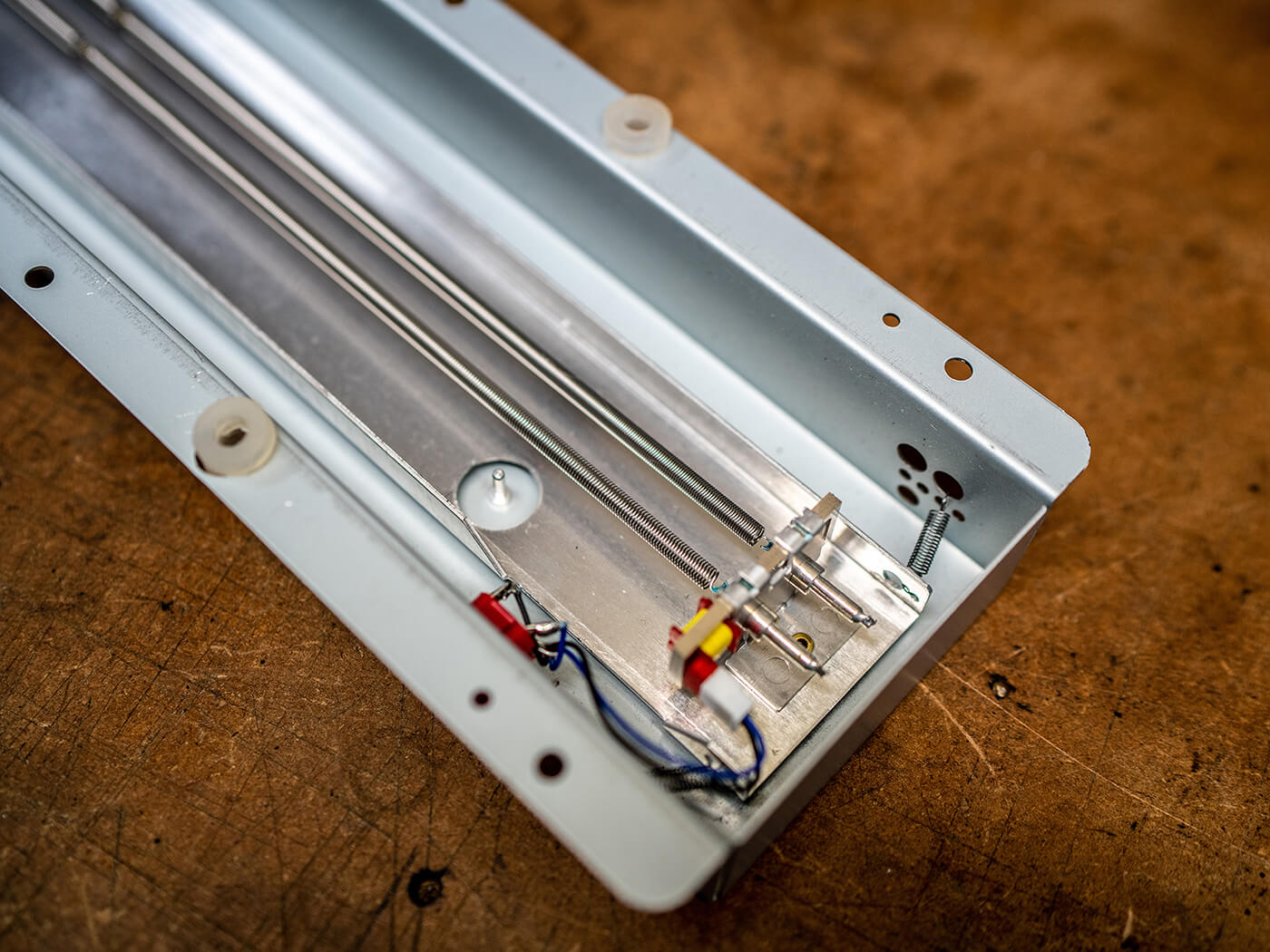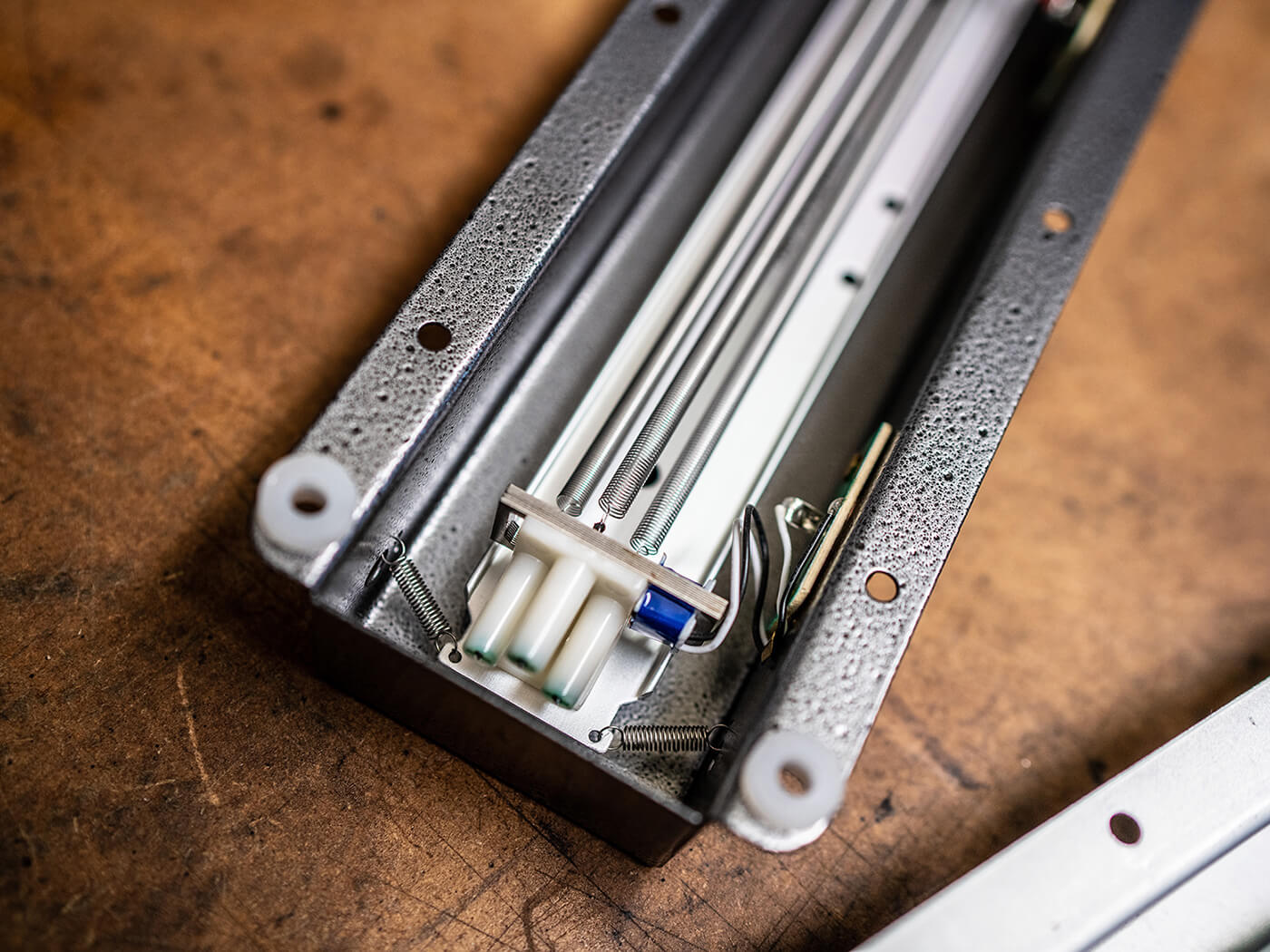Related Tags
Amp FAQ: Everything you need to know about spring reverb tanks
Need a replacement reverb tank for your guitar amp but don’t know where to start? Let Rift head honcho Chris Fantana be your guide.

Reverb tanks come in two sizes, 16.5 inches and 9.5 inches
Hi Chris, I need to order a replacement Reverb tank for my amplifier, can you tell me what the different numbers mean, and can I use any tank?
Anton, St Ives
Hi Anton, many thanks for your question in what will be the final printed instalment of my column. Don’t worry though, I’ll carry on answering reader’s questions online at Guitar.com, so keep sending them in.
Just like speakers, reverb tanks have a number of different properties that the circuit is designed for, so you’ll need to order a like-for-like replacement to ensure correct operation. Well, almost. Let’s break it down…
Here’s a typical Fender reverb tank code: 4AB3C1B. Sadly, I know this one off by heart, it’s by far the most common tank used in guitar amplifiers. The seven-digit code is important as it tells us everything about it, from the size, to the reverb length, to the connector orientation. It even tells us which way to mount it in the cabinet.
Tank type
There are three different tanks available. Type 4 is 16.5 inches in length with four counter-wound springs in 2×2 arrangement. Type 8 is 9.5 inches in length with three springs. Type 9 is 16.5 inches in length with six counter springs in 3×2 arrangement. This is usually suited to keyboard and pedal steel. You might find a Type 1 tank, however these were discontinued and replaced by Type 8.

Input impedance
This is matched to the output impedance of either the reverb transformer or driver valve/transistor.
A – 8 ohm
B – 150 ohm
C – 200 ohm
D – 250 ohm
E – 600 ohm
F – 1,475 ohm
Output impedance
This is matched to the input impedance of the recovery stage.
A – 500 ohm
B – 2,250 ohm
C – 10,000 ohm
Decay time
This is the reverberation length. 1 is short, at 1.2-2 seconds. 2 is medium, at 1.75-3 seconds. 3 is long, at 2.75-4 seconds.
Connectors
A: input grounded/output grounded. B: input grounded/output insulated. C: input insulated/output grounded. D: input insulated/output insulated. E: no outer channel.
Locking devices
Some tanks, such as those found in Fender’s 6G15 standalone reverb unit, had a transportation lock to stop the springs bouncing around in transit. 1 means there’s no lock, 2 means there’s a lock.
Mounting plane
A: horizontal open side up
B: horizontal open side down
C: vertical connectors up
D: vertical connectors down
E: one end input up
F: one end output up

How does this all work in practice? Let’s take a look at the classic Fender tank 4AB3C1B. The code tell us it’s a 16.5 inch 2×2 spring tank, designed to be mounted on the floor of a cabinet, with an insulated input and a long reverb time. The input impedance is eight ohms and the output is 2,250 ohms.
If you wanted to swap this for the smaller 9.5 inch tank, then you’d order 8AB3C1B. Want the same size tank but with a shorter reverb time? Then go for 4AB2C1B. Providing the input/output, mounting plane and connector configuration specs remain constant, you can swap between the different tank types and reverb times with no issues whatsoever.
Marshall typically used a very different tank in their amplifiers. 4FB2A1C is a 16.5 inch tank with 1,475 ohm/2,250 ohm impedance, medium reverb length and insulated input, designed to mount on the the side of the cabinet with the connectors facing upwards (although usually found facing down).
The Type 9 tank is an interesting one. If you’re a huge fan of spring reverb then I highly recommend trying one of these in your amplifier. The space and depth is huge, but you might suffer with some extra splashiness in certain circuits.
Replacement reverb tanks are cheap – usually around £30 here in the UK – and are a great way to tweak your amplifier’s sound for very little outlay. Good luck, and enjoy!
Visit riftamps.com to check out Rift’s range of UK-built boutique amplifiers.
